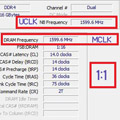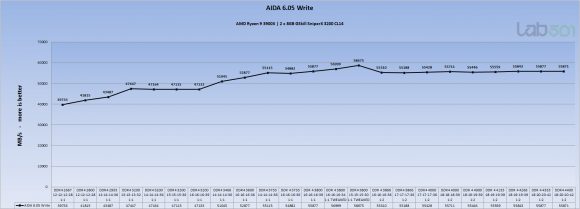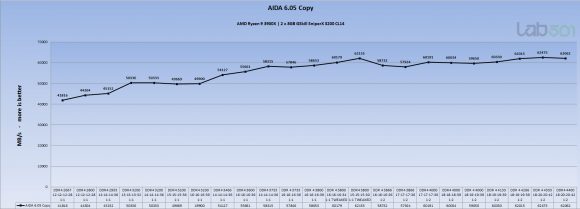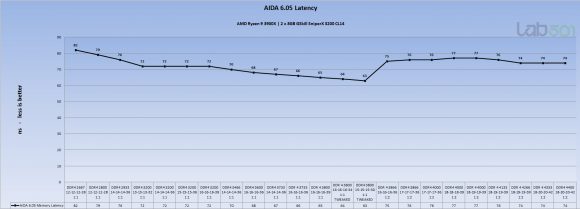AMD Ryzen 3000 – Part IV – DDR4 Scaling – ENGLISH Version

AIDA – Extended
All right, ladies and gentlemen. We chose 6 configurations and used them throughout our entire suite of tests, which helps us get a feel regarding the differences in performance we can observe in daily use. So… what next? Well, things are pretty clear – depending on the configuration, we get a higher bandwidth or a lower latency. Some applications scale with bandwidth, others with latency. As a result, in order to get a more complete ideea regarding the different configurations we can use and the differences between them, we used the AIDA 64 Cache and Memory Benchmark to compare 21 memory configurations.
However, during these tests, we noticed a strange situation. You see, in certain situations, when we are playing at the limit of platform stability, using lower timings does not always have the effect we want. This has quite a simple explanation – if you only set the clocks, the fClk: uClk: mClk ratio and the main timings, the motherboard will sometimes relax the sub-timings to cope with the stress that the RAM is subjected to. For this reason, after testing 21 configurations in which we only set the main timings, we manually set sub-timings for two more configurations to see what the platform is actually capable of. These are listed in the graphics as “tweaked.”
In the Memory Read test, performance increases steadily as frequency increases up to around the DDR4 3733 1:1 setting. From what we can see, most 1:2 configurations (from DDR4 3866 upwards) will provide similar performance. On the other hand, when we set DDR3 3800 1:1 and we really tighten the timings, we get a significant increase in performance. The same thing we can observe in the write test, and even in the copy test, with the mention that in this case the values tend to increase proportionally with the frequency, the best Copy value being reached at DDR4 4333 18-20-20-42.
Which brings us to the last graph, where we measure latency, and here things are as clear as possible. As long as we achieve a high sync frequency, in our case DDR4 3800, the performance grows dramatically as long as we tighten the timings and sub-timings, DDR4 3800 15-15-15-30 1T 1: 1 offering the best performance.












Comentarii
Niciun comentariu la: AMD Ryzen 3000 – Part IV – DDR4 Scaling – ENGLISH Version
Pingback: AMD Ryzen 3000 – Part IV – DDR4 Scaling – ENGLISH Version - 1iT.ro - Stiri IT, noutati si tehnologie
Pingback: AMD Ryzen 3000 – Part IV – DDR4 Scaling – ENGLISH Version | Stiri IT & C
Pingback: Arbeitsspeicher: Ryzen 3000 rechnet mit DDR4-3733-CL16 am schnellsten - Deutschland Nachrichten
Pingback: RAM: Ryzen 3000 expects DDR4-3733-CL16 faster – Arcynewsy
Pingback: AMD Ryzen 3000 DDR4 Scaling - Part II – Samsung B-Die vs Micron E-Die vs Hynix CJR - English version - lab501
Pingback: AMD Ryzen 3000 DDR4 Scaling - Part III – AMD Ryzen 5 3600X + B450 - English version - lab501